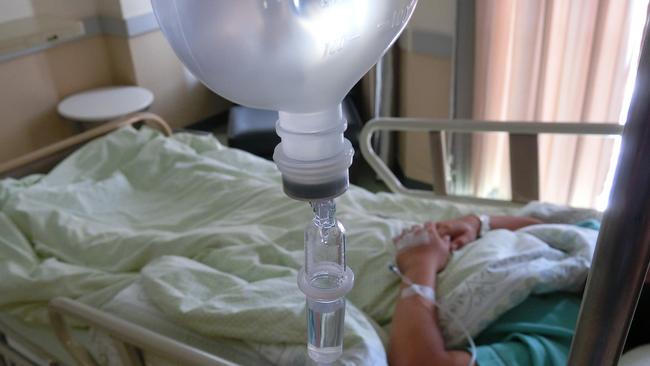Bupa outlines key reform areas to rein in private health costs
Bupa has outlined three key areas of reform aimed at making private healthcare affordable enough for Millennials to finally stop shunning it.

Shorter hospital days, funding for services like yoga to appeal to younger Australians and “independent” pricing for medical devices have been put forward by health insurance major Bupa as wishlist for further government reform to rein in spiralling premium costs.
Bupa — which controls more than quarter of Australia’s health insurance market — will raise its premiums by 3.21 per cent on average on April 1 as it braces for a spike in healthcare costs of up to 4 per cent this year.
Since December the Morrison government has been consulting with private health stakeholders on it “second wave” reforms to make health insurance more affordable. It follows the government expanding home and community-based care in the 2020-21 federal budget, beginning with mental health and general orthopaedic rehabilitation services.
The anaemic take-up of health insurance by younger Australians is one threat to the sector’s viability, according to Bupa Health Insurance managing director Emily Amos.
To this end, Bupa began funding Sam Wood’s online fitness and nutrition program for three months last year, with uptake of the program stronger than expected.
“Insurers need the flexibility to evolve their product offer,” she said. “Enabling insurers to fund a broader range of non-rebatable health and wellbeing services will have a far greater impact in attracting young people to private health insurance.
“Our priority is ensuring our customers receive the affordable, personalised, connected, high-value care that helps them lead longer, healthier and happier lives. These considerations will be front of mind as we continue to work with the government, hospitals and healthcare professionals to pursue real reform.”
Ms Amos said that when lifetime health cover was introduced in 2000, there were 8.5 members aged under 65 for every member aged over 65 or older.
“By 2019 the figure was just 4.3 members. The 60-plus insured aged cohort overtook the 20 to 39-year-old cohort around four years ago and on current trends the 60-plus age group will also overtake 40 to 59-year-olds in the foreseeable future.”
In January, parliament changed the legislated maximum age of dependants for private health insurance policies from 24 to 31 years, while allowing insurers to offer policies with no age limit for dependants with a disability.
“While we applaud efforts to encourage participation by young people, addressing the cost barriers will have limited impact if the product is fundamentally irrelevant to this group,” Ms Amos said.
Shorter stays

Like rival Medibank, Bupa also believes shorter hospital stays will help combat rising health costs as well as an “independent approach to price setting” of medical devices. But unlike Medibank, it isn’t planning on snapping up stakes in private hospitals.
Instead Ms Amos advocated more hospital-in-the-home treatment, saying its members should be granted more choice about where they convalesce.
Ms Amos said 90 per cent of private patients underwent rehabilitation in hospital, while in the public system the rate was about 20-30 per cent.
“We don’t want health insurance to cost one dollar more than necessary. But the reality is, the increasing cost of healthcare continues to drive premiums up. This is partly due to our ageing population and advances in medicine, but also inefficiencies and waste,” Ms Amos said.
“Health insurers are required to pay for care delivered in hospitals, even when it may have low clinical value. For example, following a knee or hip replacement, private patients are transferred to in-hospital rehabilitation at around double the rate of public patients. Not only is hospital-based care significantly more expensive, many people prefer to recover in their own home, surrounded by appropriate support, where clinically appropriate.”
Across the entire sector, premiums will rise by 2.74 per cent on average, costing families an extra $127 a year.
“The government is committed to improving private health insurance for the benefit of all Australians,” Health Minister Greg Hunt said last December.
Meanwhile, Australia’s biggest private hospital group, Ramsay Health Care, says any reform regarding the treatment of patients must be doctor-led to ensure financial decisions don’t override clinical care. Ms Amos agrees, saying at home care must be clinically appropriate.
The need for more reform comes as the number of older Australians continues to outstrip the young and healthy, according to the latest data from the Australian Prudential Regulatory Authority, putting further pressure on premiums.
Last week APRA revealed health insurance membership in the 50-plus age group increased by 78,200 people, while membership among those aged 20 to 49 was “more subdued”, rising by 14,639 in the year to December.
Meanwhile, net margins fell 2 percentage points to 1.9 per cent, with the regulator citing the “deferral of the April 2020 premium increases and other concessions provided to policyholders”.
Ms Amos said Australian private patients continuing to pay too much for medical devices.





To join the conversation, please log in. Don't have an account? Register
Join the conversation, you are commenting as Logout